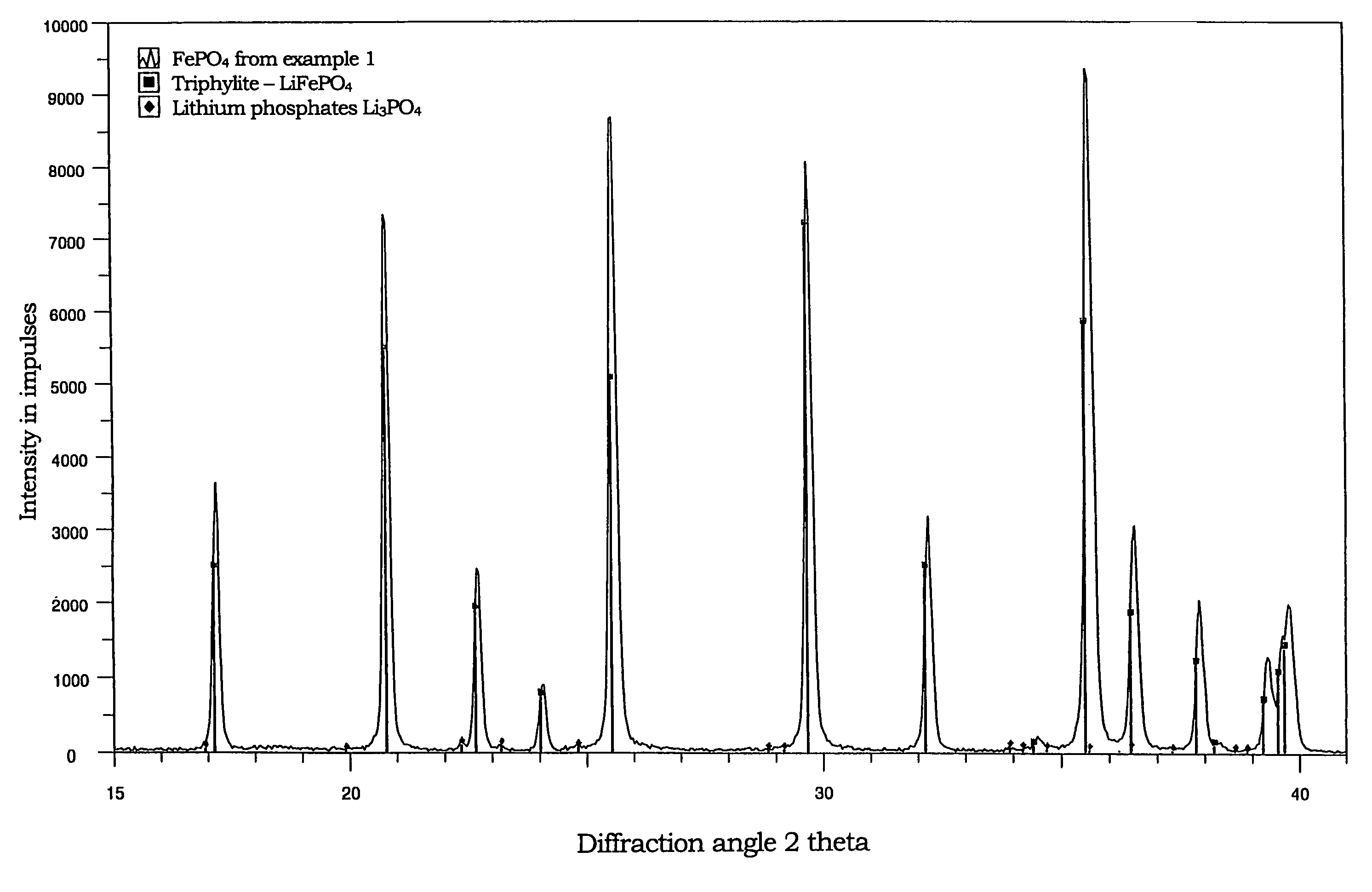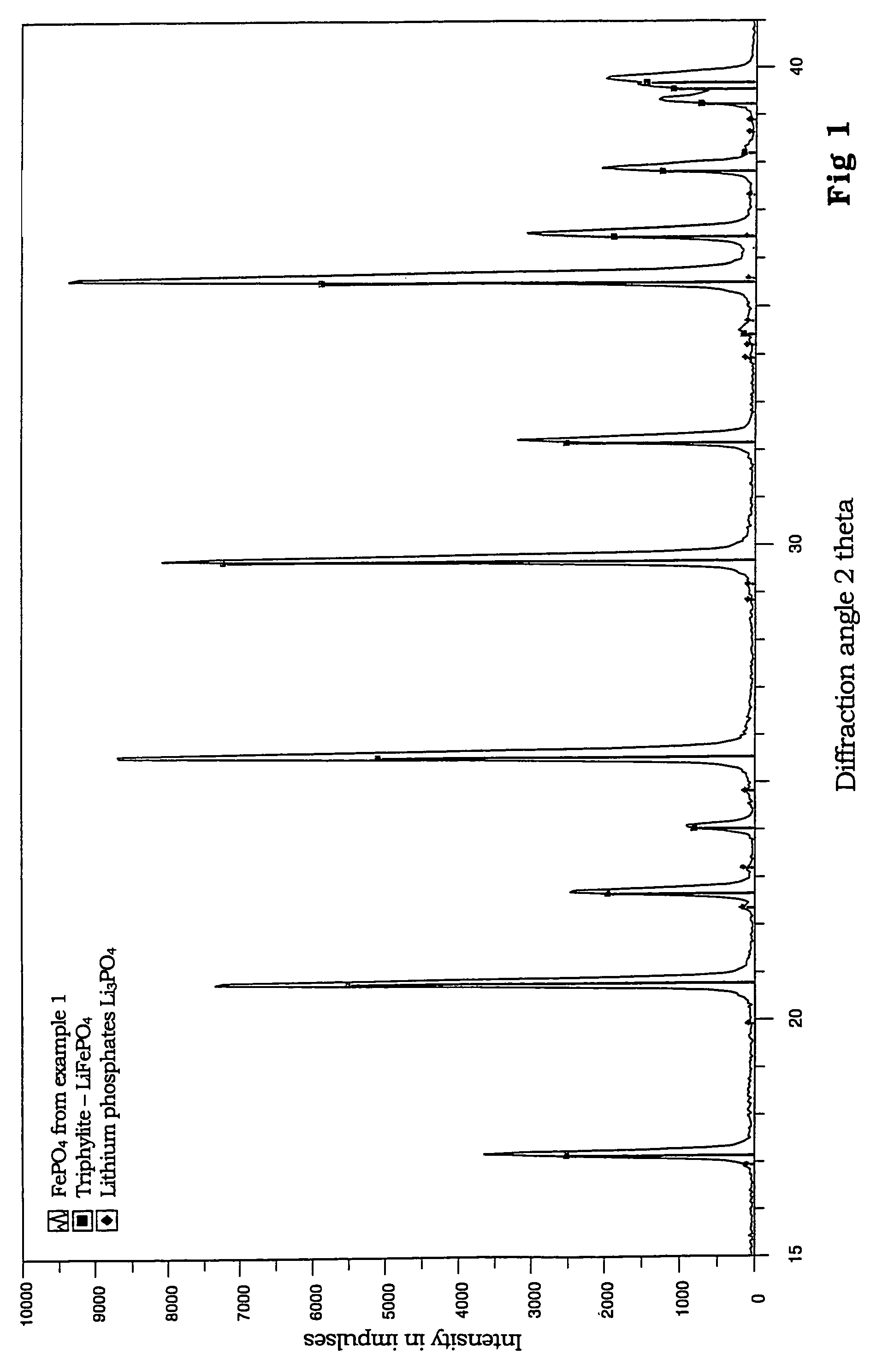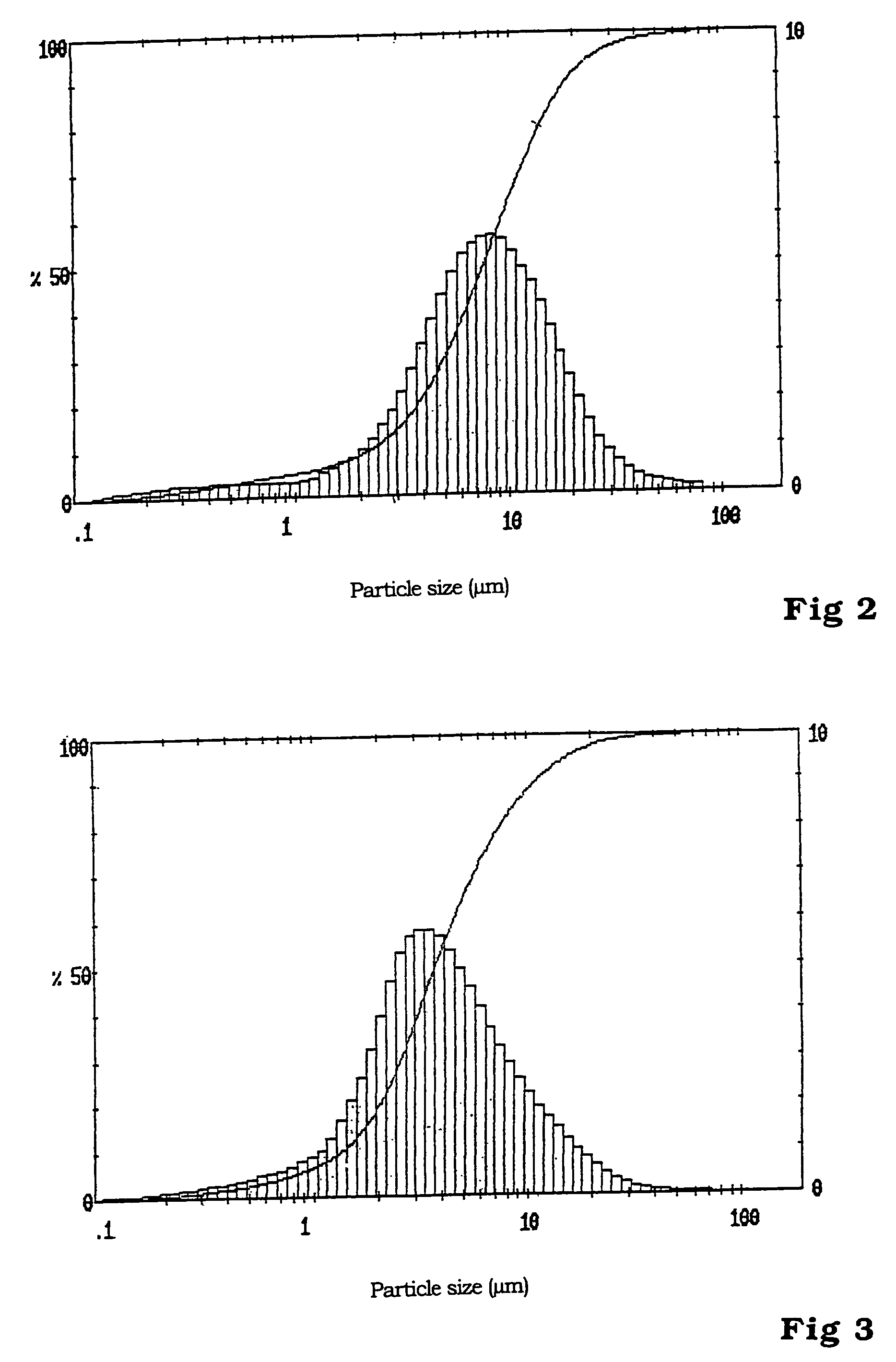Binary, ternary and quaternary lithium phosphates, method for the production thereof and use of the same
a lithium iron phosphate, ternary and quaternary technology, applied in the direction of lithium compounds, conductors, cell components, etc., can solve the problems of low capacity of known lithium iron phosphate at room temperature, and high energy cost and low flow rate. , to achieve the effect of simple and inexpensive process and high specific capacity
- Summary
- Abstract
- Description
- Claims
- Application Information
AI Technical Summary
Benefits of technology
Problems solved by technology
Method used
Image
Examples
example 1
Manufacture of LiFePO4
[0022]From 0.52 mol (54.26 g) of lithium dihydrogen phosphate and 0.4 mol (111.21 g) of iron (II) sulfate heptahydrate, each dissolved in 400 ml of anaerobic demineralized water, a mixture with homogenous dispersion is manufactured when blended in an atmosphere of inert gas. A previously anaerobic aqueous solution of 0.85 mol (35.70 g) of lithium hydroxide monohydrate, dissolved in 200 ml of demineralized water, is trickled into this mixture over a period of 15 minutes while being stirred at room temperature. This leads, with strict exclusion of oxygen, to a white, lightly settling suspension.
[0023]The suspension is filtered in a nitrogen atmosphere and washed free of sulphate with a total of 500 ml anaerobic demineralized water.
[0024]The precursor, obtained as a white filter cake, consists of lithium-o-phosphate and vivianite (Fe3(PO4)2 hydrate) and is dried initially in nitrogen at 150° C.
[0025]For transformation to the triphyline phase in the nitrogen strea...
example 2
Manufacture of LiFe0.98Mn0.02PO4
[0028]From 0.13 mol (13.57 g) of lithium dihydrogen phosphate, dissolved in 100 ml of demineralized water, and a solution of 0.098 mol (27.25 g) of iron (II) sulfate heptahydrate and 0.002 mol (0.34 g) of manganese sulfate monohydrate in 100 ml of demineralized water, a homogenous mixture is manufactured under stirring and in an atmosphere of protective gas. A previously anaerobic aqueous solution of 0.212 mol (8.94 g) of lithium hydroxide monohydrate, dissolved in 50 ml of demineralized water, is trickled into this mixture over a period of 4 minutes while being stirred at room temperature.
[0029]The white suspension is filtered in a nitrogen atmosphere and washed free of sulphate with a total of 150 ml of anaerobic demineralized water.
[0030]The white filter cake is dried in an nitrogen atmosphere at 130° C.
[0031]The phosphate mixture obtained in this way is heated to a final temperature of 675° C. for its transformation to the triphyline phase in a n...
example 3
Manufacture of LiFePO4 with Use of Additives
[0033]A homogenous mixture is manufactured from 0.065 mol (6.78 g) of lithium dihydrogen phosphate, dissolved in 50 ml of anaerobic 20% aqueous solutions of polyethylene glycol 20000 and a similarly anaerobic solution of 0.05 mol (13.90 g) of iron (II) sulfate heptahydrate in 60 ml of a 20% aqueous solutions of polyethylene glycol 20000, under constant stirring. A previously anaerobicized aqueous solution of 0.106 mol (4.47 g) of lithium hydroxide monohydrate, dissolved in 25 ml of demineralized water, is trickled into this mixture over a period of 3 minutes while being stirred at room temperature. The resulting stable, white suspension is broken by the addition of 500 ml of anaerobic ethanol (99.6%). Thereafter, the sediment is centrifugated (3,000 rpm) under a nitrogen atmosphere, and the bottom product is washed free of sulphate with a total of 200 ml of anaerobic demineralised water, and then dried under nitrogen at 150° C.
[0034]The ph...
PUM
| Property | Measurement | Unit |
|---|---|---|
| temperature | aaaaa | aaaaa |
| temperature | aaaaa | aaaaa |
| temperature | aaaaa | aaaaa |
Abstract
Description
Claims
Application Information
 Login to View More
Login to View More - R&D
- Intellectual Property
- Life Sciences
- Materials
- Tech Scout
- Unparalleled Data Quality
- Higher Quality Content
- 60% Fewer Hallucinations
Browse by: Latest US Patents, China's latest patents, Technical Efficacy Thesaurus, Application Domain, Technology Topic, Popular Technical Reports.
© 2025 PatSnap. All rights reserved.Legal|Privacy policy|Modern Slavery Act Transparency Statement|Sitemap|About US| Contact US: help@patsnap.com



